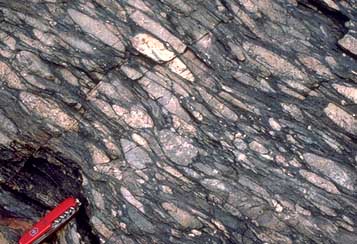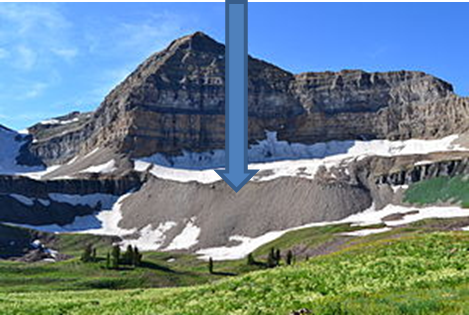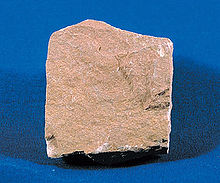Video Review
Key Concept Summary
TA Summary
True/False
Chemical weathering is caused by water entering cracks and expanding as the water freezes.
Analysis
A sinkhole can form in limestone when water dissolves the limestone. Which of the following best describes this type of weathering?
The following picture shows a metaconglomerate, which resulted from a sedimentary rock called a conglomerate rock experiencing high pressure and temperature. Based upon what you know about foliation, which of the following arrows best describes the direction of the pressure on the conglomerate as it was experiencing metamorphism? 

Which of the following forces apply to the movement of a magma body? (Select all correct answers.)
What does chemically combining with water do to the melting temperature of rock?
Which of the following types of rock are created from volcanic eruptions or from crystallization of magma beneath Earth's surface?
Below are pictures of several different igneous rocks. Which of the igneous rocks cooled quickly above Earth's surface?
Slate, marble, and gneiss are examples of which of the following types of rock?
The following picture shows a talus pile on the front of Mt. Timpanogos in Utah. Which of the following best describes the weathering process which created this pile? 

Sandstone, limestone, and shale are examples of which of the following types of rock?
The following picture shows a siltstone which is a clastic sedimentary rock. Which of the following best describes how the siltstone is cemented together? 
